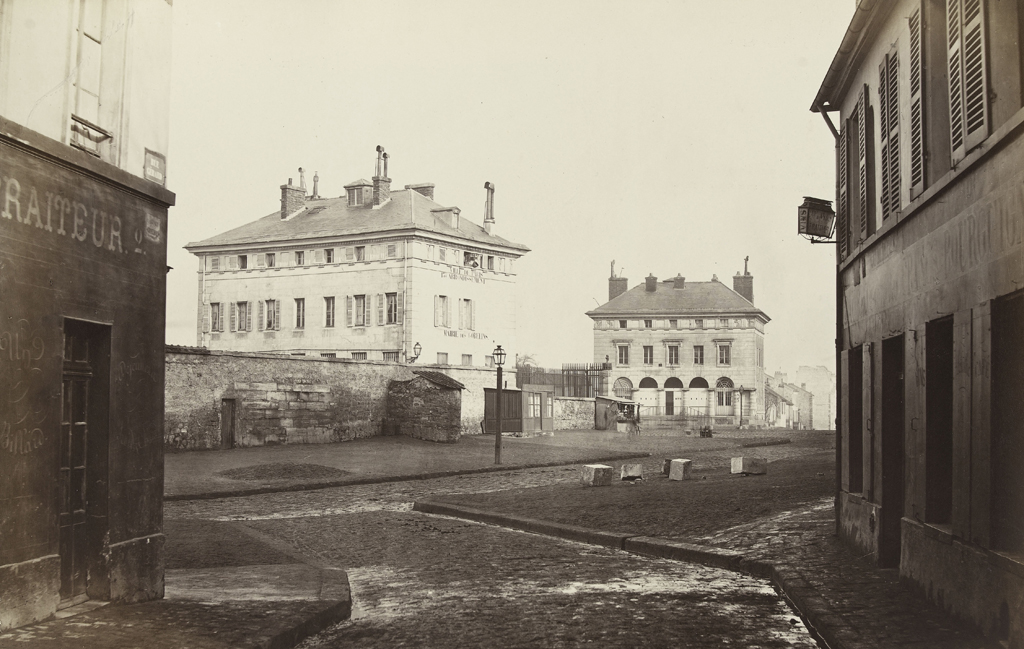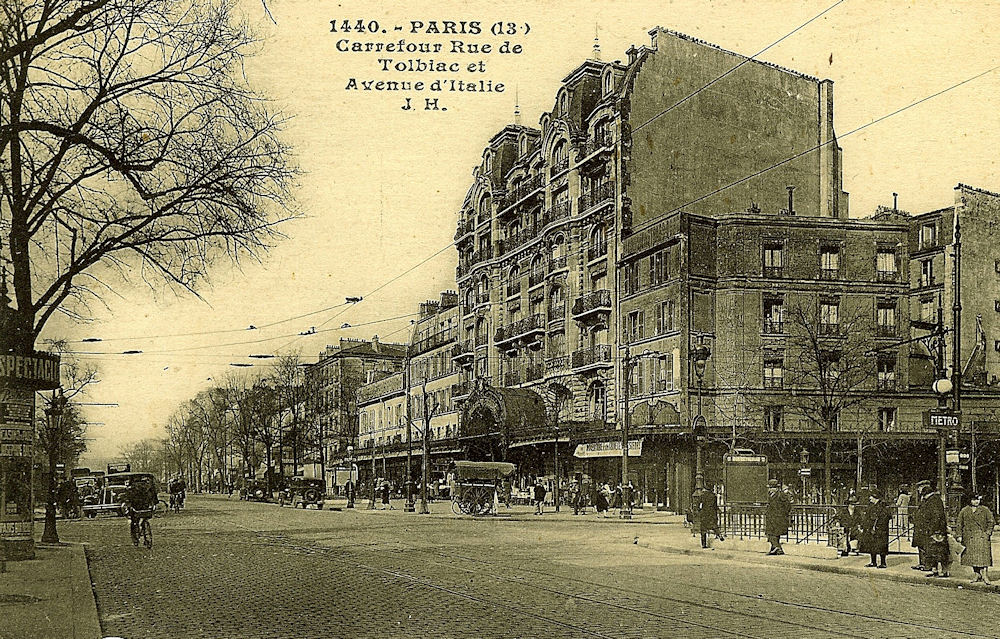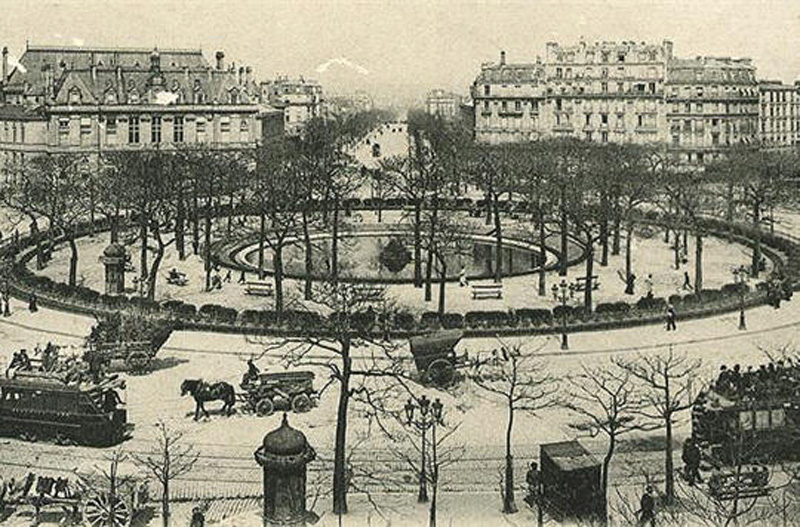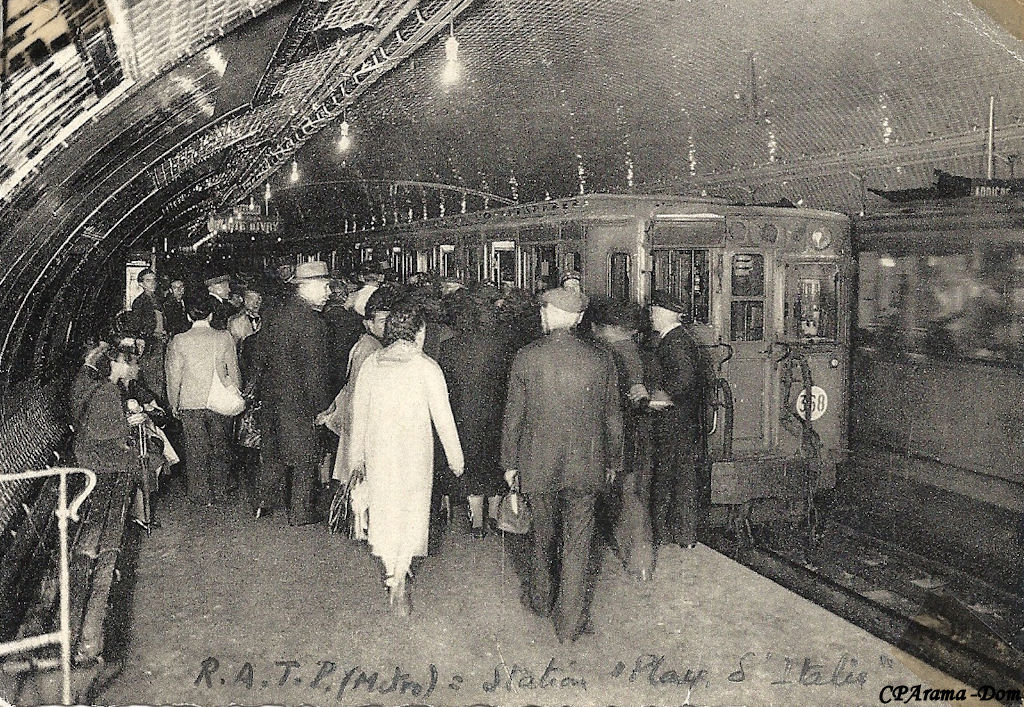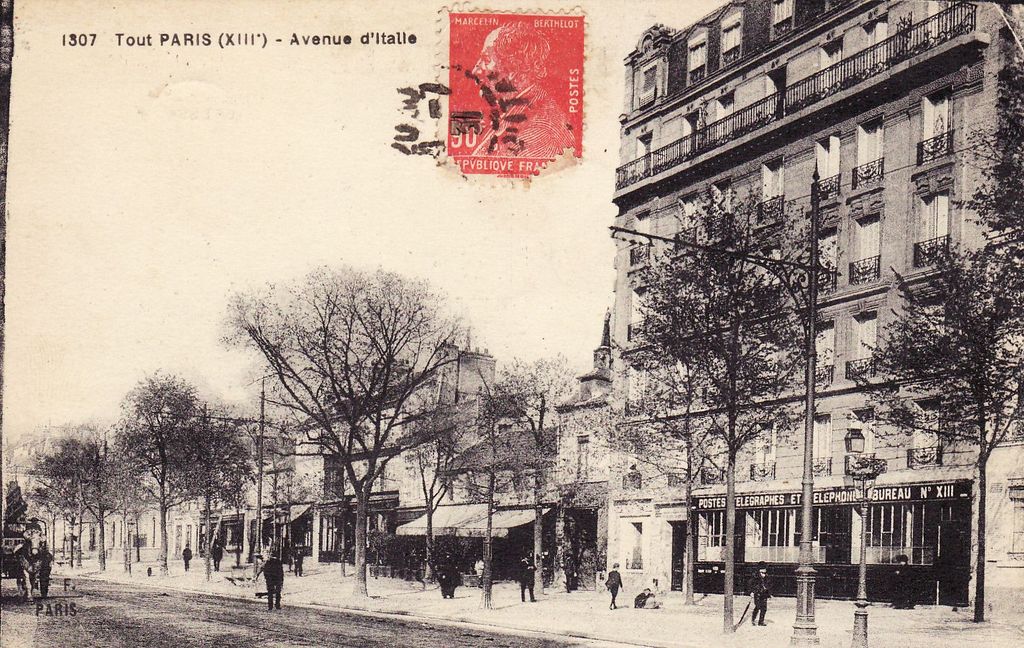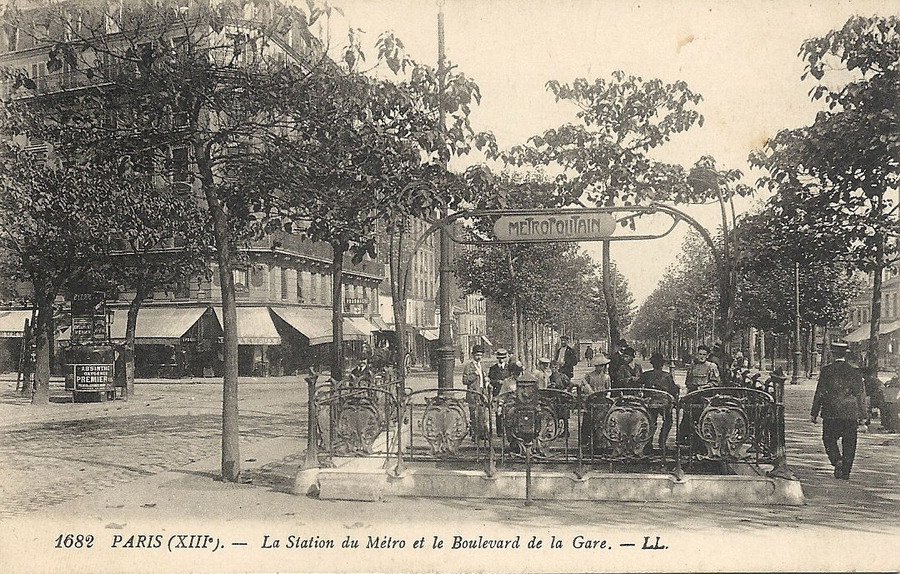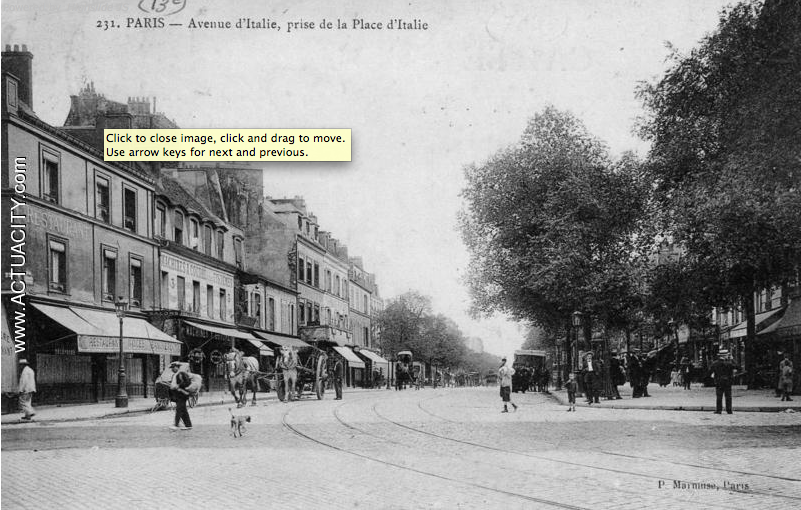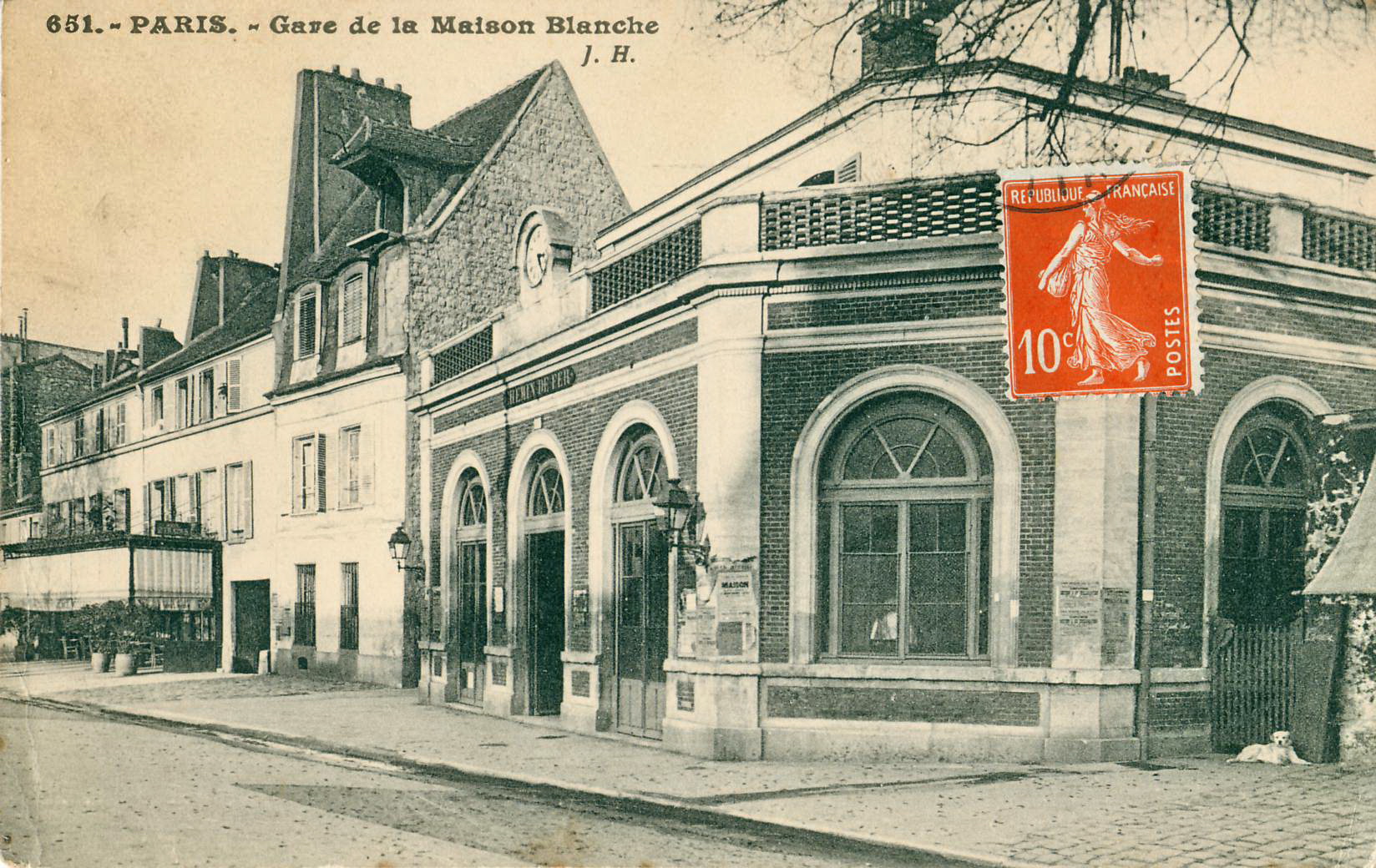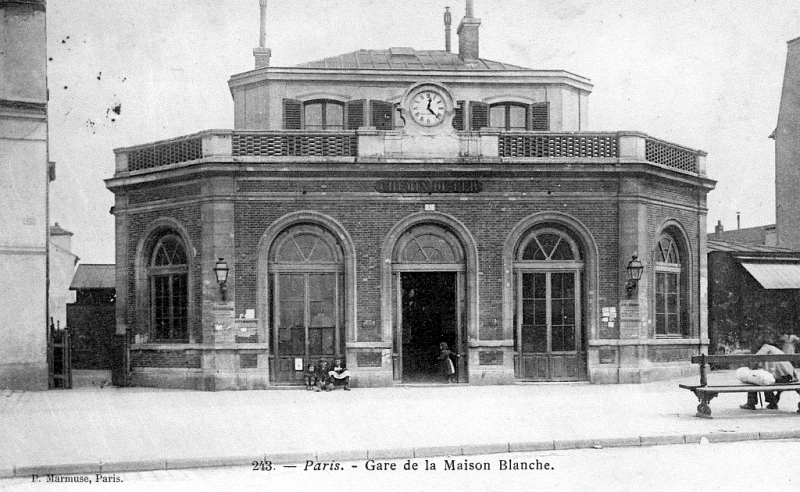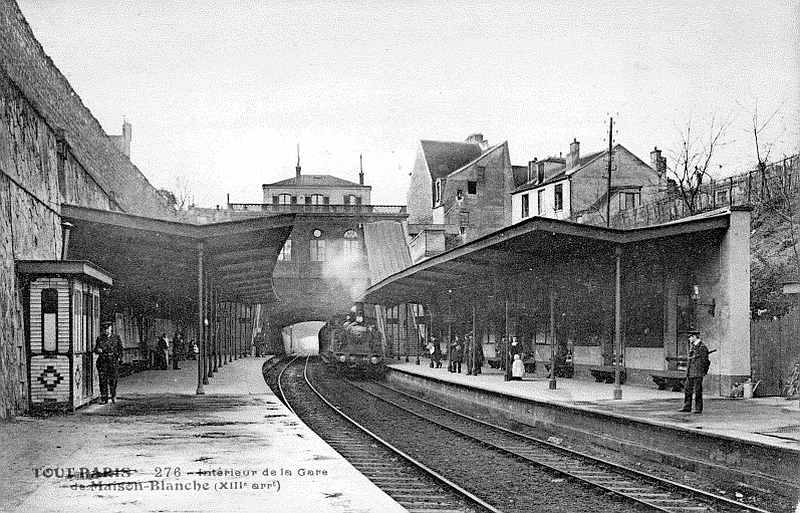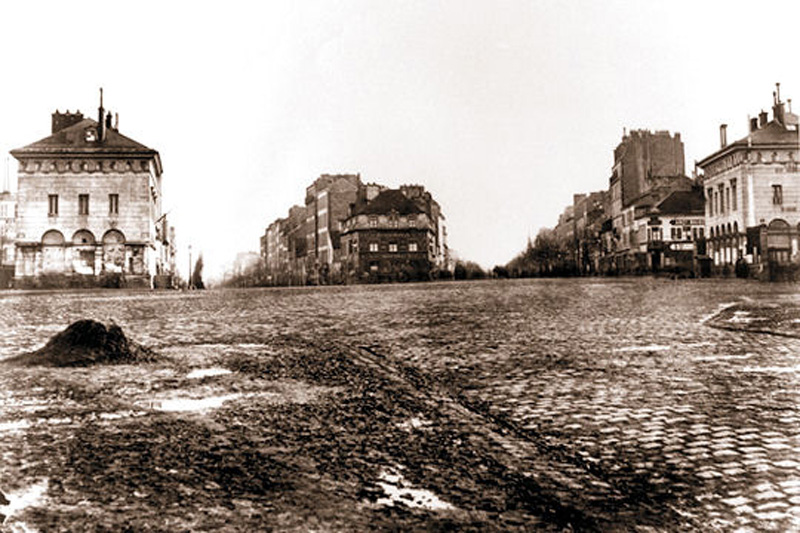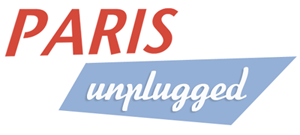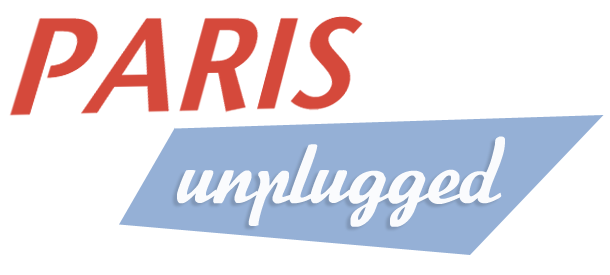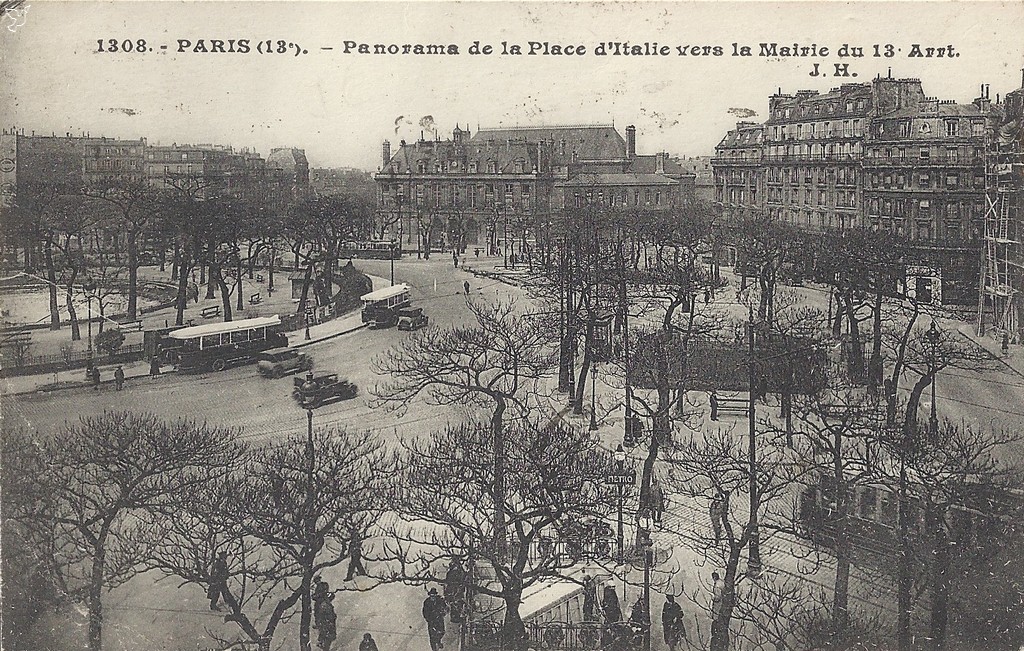
Jusqu’en 1860, la Place d’Italie constituait la frontière qui séparait Paris de Gentilly, via le mur des Fermiers Généraux (voir article). Deux pavillons Ledoux trônaient alors en son centre, au même titre que sur toutes les places qui marquaient le trajet des boulevards intérieurs. L’Avenue d’Italie, ancien chemin de la Commune de Gentilly sera baptisée ainsi après 1860 lorsque Napoléon III et Haussmann décideront d’annexer les zones des villages connexes comprises entre le mur et les fortifications de Thiers (Voir article). Jusqu’au milieu de XIXe siècle l’endroit était composé de petites maisons telles celles que l’on trouvait au hameau de Maison Blanche, dans le même secteur.
Until 1860, the Place d’Italie was the border that separated Paris Gentilly, over the wall of the Farmers-General (see article). Two pavilions Ledoux then enthroned in its center, as well as on all the places that marked the path of the inner boulevards.
The Avenue of Italy, old road of the town of Gentilly will be named so after 1860 when Napoleon III and Haussmann decide to annex areas of related villages between the wall and fortifications of Thiers (see article).
Until mid-nineteenth century the place was composed of small houses such as those that were found in the hamlet of Maison Blanche, in the same area.
In the course of the 1960s, Le Corbusier had proposed to reduce it to a single track vehicle, which, after plunging in the Place d’Italie should connect Aubervilliers in a straight line. This project started has never been realized.
The six towers of hundred meters bordering the Avenue entrance from the square are a remnant of a huge project which planned to dispose of the entire length. The set was dominated by a tower “Apogee” higher than the Montparnasse Tower. The project was abandoned in 1975 and replaced in 1992 by the commercial building that housed the Gaumont Grand Ecran until 2006.
Breakthrough between 87 and 88 bastions of the fortifications, the Porte d’Italie punctuated throughout and offered privileged access to the N7, sung by Trenet.
LOCALISER / LOCATE
